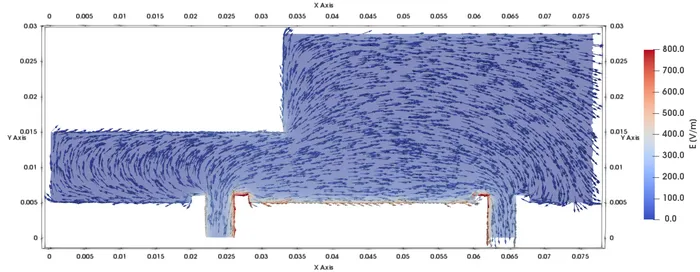Numerical analysis and characterisation of high power busbars
Today's high power densities and continuously increasing switching speed result in the necessity for power modules with utmost efficiency. To this end, their geometry and topography have to be optimized with a view to reducing current crowding and local eddy currents. Before a shape optimization can be made, it is required to define a new concept to rate the dynamic behavior of multiply contacted busbar structures, since the classical notion of “inductance” is not meaningful for such structures. Within this contect an expansion of inductances with respect to transient effects was deduced and implemented. For their computation electromagnetic fields inside and outside of high power busbars including transient effects are necessary. The pictures below show the elektric field distribution inside a part of a half-bridge of a Prime Pack module (see Figure 1) and the potential driven and induced current through one contact. It can be seen that skin effect is dominating the structure and reduces the switching speed. With our new concept of inductances such structures can be characterised and optimised.
